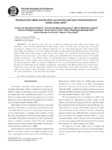Use este identificador para citar ou linkar para este item:
http://www.alice.cnptia.embrapa.br/alice/handle/doc/945921Registro completo de metadados
| Campo DC | Valor | Idioma |
|---|---|---|
| dc.contributor.author | RIBEIRO, J. do S. | pt_BR |
| dc.contributor.author | GONÇALVES, T. de M. | pt_BR |
| dc.contributor.author | LADEIRA, M. M. | pt_BR |
| dc.contributor.author | CAMPOS, F. R. | pt_BR |
| dc.contributor.author | TULLIO, R. R. | pt_BR |
| dc.contributor.author | MACHADO NETO, O. R. | pt_BR |
| dc.contributor.author | OLIVEIRA, D. M. de | pt_BR |
| dc.contributor.author | BASSI, M. S. | pt_BR |
| dc.date.accessioned | 2013-01-22T11:11:11Z | pt_BR |
| dc.date.available | 2013-01-22T11:11:11Z | pt_BR |
| dc.date.created | 2013-01-22 | pt_BR |
| dc.date.issued | 2012 | pt_BR |
| dc.identifier.citation | Revista Brasileira de Zootecnia, v. 41, n. 6, p. 1509-1515, 2012. | pt_BR |
| dc.identifier.uri | http://www.alice.cnptia.embrapa.br/alice/handle/doc/945921 | pt_BR |
| dc.description | The objective of this study was to evaluate the residual feed intake (RFI) and its relation with performance, carcass and meat characteristics of Zebu animals. A total of 40 Zebu steers with initial age of 18 months and initial live weight of 350 kg were confined in feedlot for 112 days. The average daily gain (ADG) and dry matter intake (DMI) were obtained every 14 days. Residual feed intake was determined by the difference between observed and predicted DMI, based on the metabolic weight and the ADG. Animals were classified into the RFI groups: high (>0.5 standard deviation of the mean - least efficient), medium (±0.5 standard deviation of the mean) and low (<0.5 standard deviation of the mean - most efficient). Daily cost with feeding and per kilogram of weight gain was determined. Characteristics of carcass (weight, yield, subcutaneous fat) meat (pH, shear force and color) were assessed. Animals with low RFI presented lower DMI. The variation in DMI between the low and the high RFI groups promoted difference in the daily cost with feeding and per kilogram of weight gain, with animals of low RFI presenting costs 5 and 9% lower, respectively. Carcass and meat characteristics differed over the RFI groups. The knowledge of the RFI of the animals enables a more efficient system, with reduction in the costs with feeding, without promoting alterations on the performance and carcass characteristics of the meat from Zebu animals. | pt_BR |
| dc.language.iso | eng | pt_BR |
| dc.rights | openAccess | pt_BR |
| dc.subject | Feed efficiency | pt_BR |
| dc.title | Residual feed intake and its effect on carcass and meat characteristics of feedlot Zebu cattle. | pt_BR |
| dc.type | Artigo de periódico | pt_BR |
| dc.date.updated | 2016-03-03T11:11:11Z | pt_BR |
| dc.subject.thesagro | Performance | pt_BR |
| dc.subject.nalthesaurus | meat quality | pt_BR |
| riaa.ainfo.id | 945921 | pt_BR |
| riaa.ainfo.lastupdate | 2016-03-03 | pt_BR |
| dc.contributor.institution | JULIMAR DO SACRAMENTO RIBEIRO, Universidade Federal de Lavras | pt_BR |
| dc.contributor.institution | TARCISIO DE MORAES GONÇALVES, Universidade Federal de Lavras | eng |
| dc.contributor.institution | MÁRCIO MACHADO LADEIRA, Universidade Federal de Lavras | eng |
| dc.contributor.institution | FABRÍCIO RODRIGUES CAMPOS, Universidade Federal de Lavras | eng |
| dc.contributor.institution | RYMER RAMIZ TULLIO, CPPSE | eng |
| dc.contributor.institution | OTÁVIO RODRIGUES MACHADO NETO, Universidade Federal de Lavras | eng |
| dc.contributor.institution | DALTON MENDES DE OLIVEIRA, Universidade Federal de Lavras | eng |
| dc.contributor.institution | MARCELO SILVA BASSI, Universidade Federal de Lavras. | eng |
| Aparece nas coleções: | Artigo em anais de congresso (CPPSE)  | |
Arquivos associados a este item:
| Arquivo | Descrição | Tamanho | Formato | |
|---|---|---|---|---|
| RymerResidualfeedintake2012.pdf | 96,16 kB | Adobe PDF |  Visualizar/Abrir |









